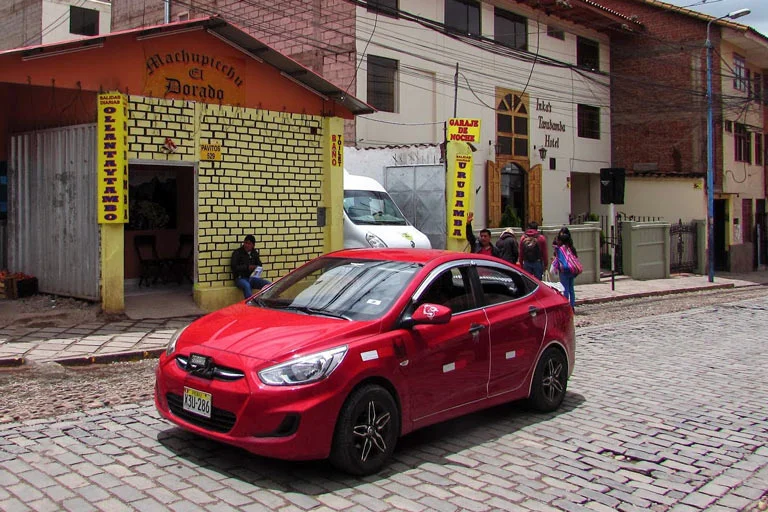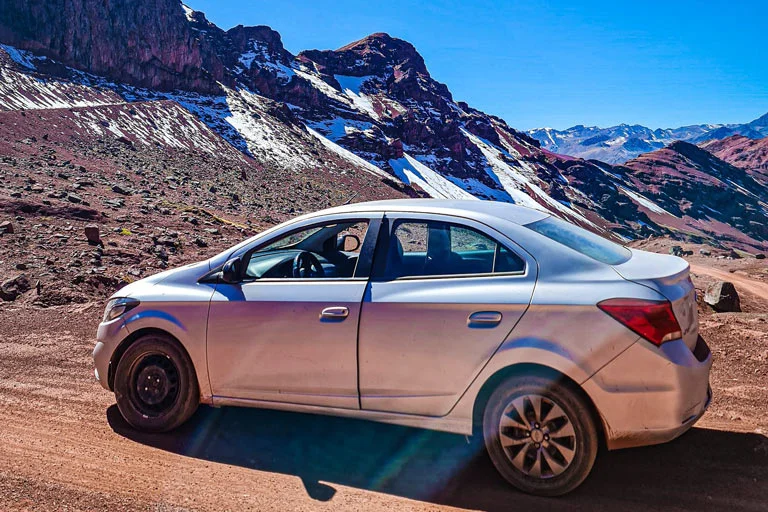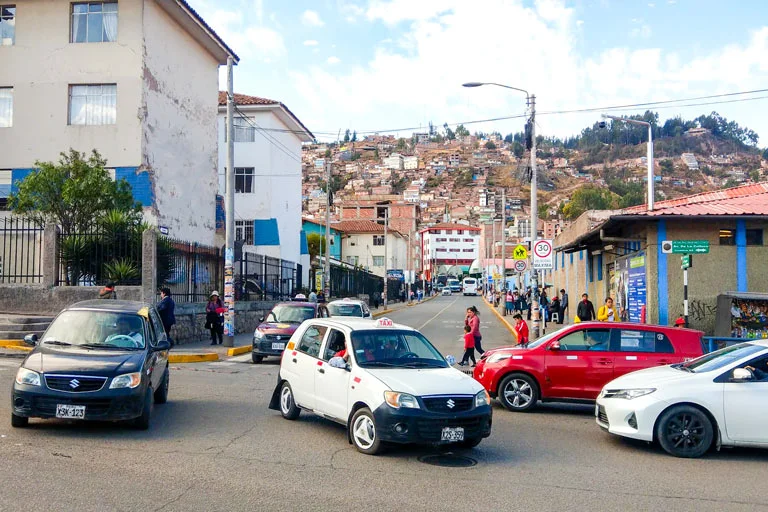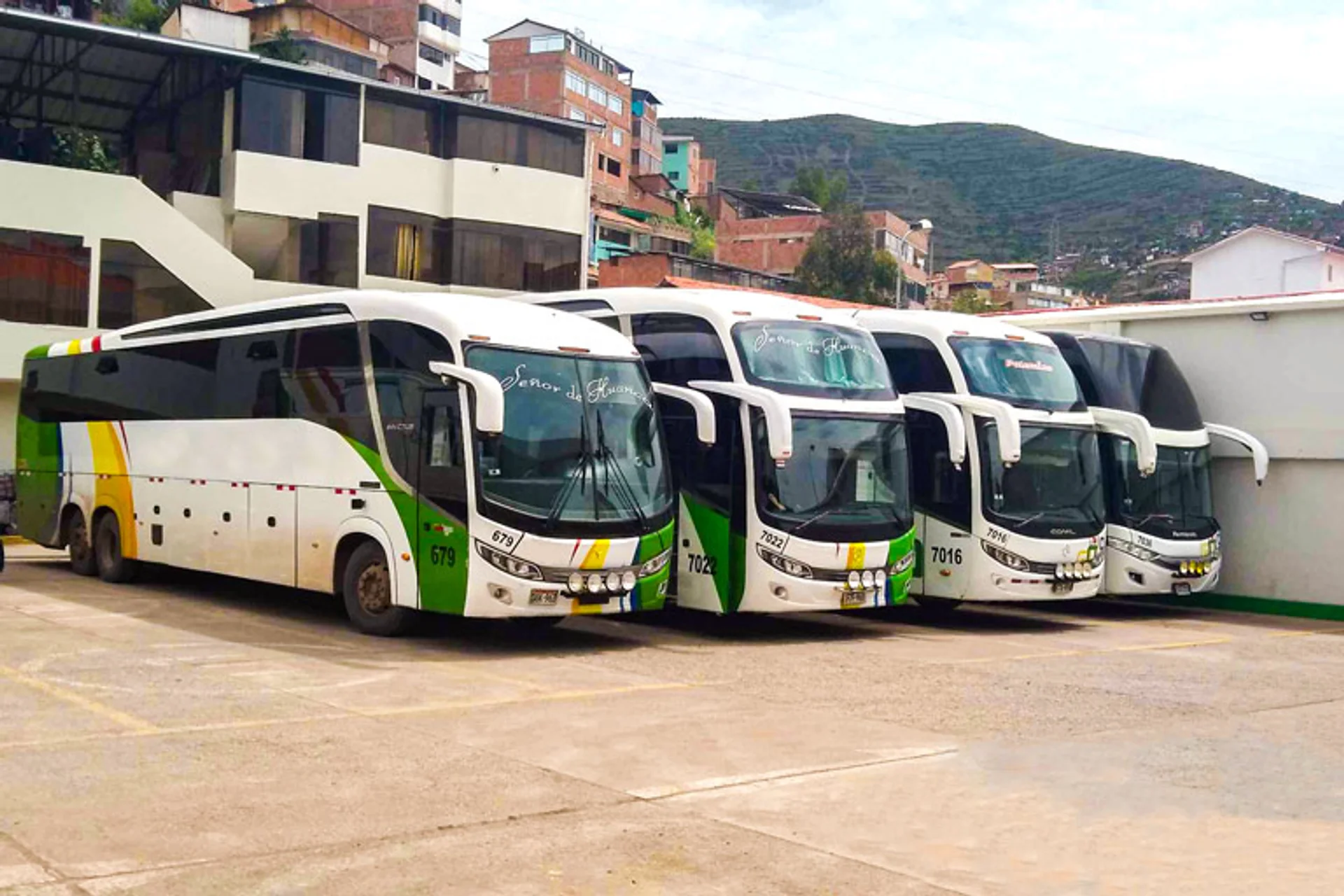Are there public buses to tourist sites? What you should know
Can you get to Machu Picchu or other tourist destinations by public bus? Many travelers ask this question before planning their trip to Peru. The idea of saving money sounds tempting, but… is it really possible? In this article, I’ll tell you what no one tells you about public buses to major tourist sites. Be careful! Not everything is as easy as it seems.

Content
- Public transportation to popular tourist sites
- Comparison: Public bus vs. tour or taxi
- Tips and warnings when using public transport
- Frequently Asked Questions
Public transportation to popular tourist sites

Can you take a public bus to Machu Picchu?
Machu Picchu is not accessible directly by public bus, but it is possible to take public transportation from Cusco to Ollantaytambo and from there take the train to Aguas Calientes, the closest town to the citadel. There are no roads connecting Cusco to Machu Picchu by conventional means such as buses or cars.
Another alternative is to take public buses to Santa María, continue by collective taxi or minivan to Santa Teresa, and then walk to the hydroelectric plant. From there, you can continue on foot for about three hours or take a train to Aguas Calientes. This option is cheaper, although it’s also longer and requires more physical effort.
How to get to the Sacred Valley by public transport?
From Cusco, you can take buses or colectivos to the various towns in the Sacred Valley, such as Pisac, Urubamba, and Ollantaytambo. These frequent and inexpensive services depart from the Puputi area or Pavitos Street and are used by both locals and tourists.
Each destination has a specific stop: to go to Pisac, buses depart from Puputi; for Urubamba and Ollantaytambo, you must go to Pavitos. It’s important to check before boarding, as some buses only go to a specific stop.
Are there public buses from Cusco to Ollantaytambo?
Yes, there is public transportation from Cusco to Ollantaytambo. You can go to Pavitos Street, where buses and minibuses leave for this town. The trip takes approximately 1 hour and 45 minutes, making it an economical way to get there.
The buses usually leave when they are full, but they are quite busy, especially in the morning, so it is advisable to leave early if you have a train connection to Machu Picchu from Ollantaytambo.
Can I take a local bus to Pisac from Cusco?
Yes, you can take a local bus to Pisac from Cusco. They depart from Puputi Avenue and the trip takes between 45 minutes and an hour, depending on traffic. It’s an economical option for visiting the Pisac market or the nearby ruins.
There are also buses that depart from the same place; they tend to be a little faster and cost a little more, but they are safe and widely used by both tourists and locals.
How to get to the Seven Lagoons of Ausangate by bus?
There are no public buses that take you directly to the Seven Lakes of Ausangate. However, you can take a bus from Cusco to Ocongate or Tinke, and from there continue by taxi or private transportation to Pacchanta, the starting point of the trek.
Buses to Ocongate or Tinke depart from the Urcos bus stop, located in the southern part of Cusco. Once in Pacchanta, you can begin the hike to the lagoons, which takes about 5 to 6 hours round trip.
Is there public transportation to Laguna Humantay?
There is no direct public transportation to Humantay Lagoon, so you must take a bus to Mollepata from the Arcopata bus stop in Cusco. From Mollepata, you can continue by taxi or local van to Soraypampa, the starting point of the hike.
The journey from Cusco to Mollepata takes approximately 3 hours, and from Soraypampa, it’s a 2-hour uphill hike to reach the lagoon. Due to the length of the journey and the hike, it’s recommended to leave early.
Are there public buses at the start of the Inca Trail?
There are no public buses that go directly to kilometer 82, the starting point of the classic Inca Trail. The most common route is to take a bus to Ollantaytambo and then a taxi to the starting point.
This route can be done economically by combining public and private transportation. It’s important to coordinate your schedule carefully if you have a reservation for the Inca Trail, as there are strict time controls at the entrance.
Note:
Travelers, it’s important to know that you must book a travel agency to enter the Inca Trail; otherwise, you won’t be allowed entry. These agencies usually include transportation services, unless you specify otherwise.
How long does a public bus take from Cusco to Chinchero?
The public bus trip from Cusco to Chinchero takes between 45 minutes and an hour, depending on traffic. Buses depart from Grau Avenue or from stops near the Cascaparo market.
You can also take buses, which are a little faster. Both buses and colectivos are safe and frequent options for exploring Chinchero on your own.
Comparison: Public bus vs. tour or taxi

What is more convenient: tour, taxi or public bus?
It depends on the destination, your budget, and the time available. Tours are more convenient because they include a guide, transportation, and entrance fees, making them ideal if you’re looking for an organized, worry-free trip, although they tend to be more expensive than traveling on your own.
The public bus is the most economical option, although less flexible; it’s useful if you have time and prefer to explore places at your own pace. Taxis offer freedom and speed, but can be expensive if you’re traveling alone or going to distant destinations.
Is it safe to travel by public bus as a tourist?
Yes, it’s generally safe to travel by public bus in and around Cusco, especially during the day, as they’re used daily by locals and some tourists. The most important thing is to be aware of your belongings, especially on busy routes, where petty thefts can occur.
It’s recommended to avoid traveling on local buses at night, avoid displaying valuables, and always carry a small backpack. Although these precautions don’t usually cause problems, they help ensure a safer and more peaceful trip.
What is the price difference between a tour and a bus?
The difference is quite significant: a tour to places like Pisac or Chinchero can cost between 70 and 150 soles, including a guide and tickets, while a public bus ride costs less than 10 soles each way, although it doesn’t include a guide or tickets.
The savings are significant if you manage your time well and know how to get there, but on a tour you don’t need to worry about directions, schedules, or buying tickets. If you decide to travel on your own, it’s key to be well-informed before you leave.
Note:
It’s important to know that public buses don’t usually cover routes that include tourist circuits. Therefore, if you want to visit more than one place, choosing this method of transportation will be a bad idea, unless you only want to visit one specific site.
How comfortable is it to travel by public transport?
Public transportation in Cusco is basic and functional, but not very comfortable compared to a tour or a taxi. Buses tend to be small, with tight seats and no air conditioning, and can sometimes get quite crowded, especially during rush hour.
Even so, for short trips or if you don’t mind sharing space with others, it’s an economical way to get around. It’s important to be patient and ask for directions before boarding, as they aren’t always clearly marked.
Tips and warnings when using public transport

What should I keep in mind when using public buses?
First, make sure you know the route and the exact departure stop, as many buses in Cusco don’t have clear signs, so it’s important to ask before boarding. Keep in mind that buses don’t follow fixed schedules like tours, so there may be delays or wait times.
Be careful with your belongings: keep valuables close to you and avoid carrying backpacks on your back while on the bus. Traveling during the day is generally safer and more comfortable, as the roads are busier and there are more other passengers.
How to avoid scams on local buses?
Avoid accepting help from strangers offering you tickets or “tourist packages” near bus stops. Always pay your fare directly to the conductor or driver, and if you have any questions, ask the fare before boarding.
Be wary of people who ask you to exchange money or offer you very cheap shortcuts, and if you have suitcases, keep an eye on them; it’s best to keep them where you can watch them. Also, maintaining a confident demeanor and not displaying valuables helps avoid problems.
Are large coins or bills accepted on buses?
In general, large bills are not accepted on public buses, so it’s best to carry coins or small bills of 1, 2, 5, or 10 soles. If you pay with bills worth 20 or more, they may not have any change and ask you to get off to exchange them.
Carrying cash makes paying easier, avoids boarding delays, and also protects you by reducing the risk of receiving incorrect change or falling victim to petty scams.
What days are there no public transport services?
Public buses operate every day, including Sundays and holidays. However, on certain holidays, such as Inti Raymi (June 24) or New Year’s Day, some services may be reduced or rerouted due to parades and road closures.
Also, on days of protests or roadblocks, service may be suspended entirely. In these cases, it’s best to check with locals or your accommodation to see if transportation is available before leaving.
Can I bring large luggage or backpacks on the bus?
Yes, you can, but there are limitations: if you’re carrying a large backpack or suitcase, you’ll need to place it in the back or front of the bus, or in the aisle if there’s enough space. On long journeys, some buses also allow you to place luggage on the roof.
It’s important to keep an eye on your luggage throughout the trip, as there are no secure compartments or staff to look after it. If the bus is full, it can be uncomfortable and more difficult to find enough space, so it’s best to travel early or avoid rush hour.
